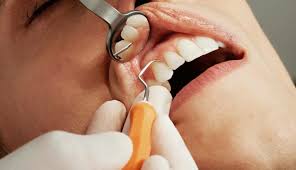The Best Benefits of Cignal Dental Insurance: Dental insurance covers the price of preventive dental care while easing the impact on more expensive operations such as crowns, bridges, and fillings. It is critical to browse around for a dental insurance provider that offers policies that give the level of protection you require without having low yearly limitations or exclusions that prevent you from receiving any benefit.
Preview of Cignal Dental Insurance
NOTE: CIGNA DENTAL INSURANCE PLANS ARE NOT MAJOR MEDICAL OR COMPREHENSIVE HEALTH INSURANCE POLICIES AND DO NOT PROVIDE THE MINIMUM ESSENTIAL COVERAGE NECESSARY TO AVOID PENALTIES UNDER THE AFFORDABLE CARE ACT OF 2010 (ACA).
Types of Dental Insurance
Understanding the basic variations between forms of dental insurance might help you choose the correct plan for you.
A variety of types of dental insurance available. When looking for dental insurance and selecting a plan, you should be aware of the following:
- Is a deductible and coinsurance required?
- Is it necessary for you to select a primary care dentist?
- Is it necessary to see dentists inside a certain network in order to be covered?
What are the many kinds of dental insurance?
The following are the most common:
- Dental Preferred Provider Organization (DPPO)
- Dental Health Maintenance Organization (DHMO)
- Dental Indemnity
- Dental Exclusive Provider Organization (DEPO)
- Dental Point of Service (DPOS)
The following is an overview of the many forms of dental insurance:
#1. Dental Preferred Provider Organization (DPPO) plan?
DPPO plans provide a network of suppliers from which to pick. You can go to a dentist who is not in the network, but your fees will be greater. It is not necessary for you to select a primary care dentist.
Annual deductibles and coinsurance are common features of DPPOs. Once your deductible is met, your dental plan will begin contributing costs as part of the coinsurance up to the yearly limit each year. The majority of in-network preventative dental treatment, including as cleanings, routine examinations, and routine X-rays, is fully covered. For any care that goes beyond preventative, you may be asked to pay a copay at the time of your appointment and share expenses with your plan.
If you are willing to see dentists in the network, a DPPO can help you keep your expenditures down. This is one of the most popular and widely used forms of dental plans.
#2. Dental Health Maintenance Organization (DHMO) plan?
DHMO plans are among the most economical dental insurance. For non-preventive dental services, there is usually no deductible and merely a flat charge. The majority of preventative dental treatment, including as cleanings, examinations, and routine X-rays, is generally fully covered.
Expenses are often lower since you must select a primary care dentist from the network. These plans often do not cover visits to dentists outside of the network (there may be exceptions for some emergency services). Smaller and more local networks are possible. Dentists in a network have agreed to cut their fees. Patients benefit from this cost savings as part of their plan covering.
DHMO plans do not typically have a yearly cap for covered services. This implies that regardless of how many eligible dental procedures you require in a year, you will not have to worry about “running out” of coverage.
If you require the services of a specialist, your primary care dentist will refer you to one of the network’s providers.
#3. Dental Indemnity plan?
Dental Indemnity is a kind of dental insurance that provides you with a great deal of flexibility. It’s also known as a “conventional” dental plan or a “fee-for-service” dental plan. There is no network, so you can see whatever dentists you like. You do not need to select a primary care dentist, and depending on the plan, you may not require referrals to see specialists or obtain emergency dental treatment.
An yearly deductible and coinsurance are common features of a Dental Indemnity plan. You will pay for services out of your own money until your deductible is met. Then you and your dental plan will split the cost of covered services up to what your plan considers normal, customary, and fair. These dental plans are typically more expensive. A Dental Indemnity plan may be perfect for you if you appreciate having a lot of alternatives and few limitations.
#4. Dental Exclusive Provider Organization (DEPO) plan?
DEPO plans allow you to pick between regular dentists and specialists. You do not need to select a primary care dentist, nor do you require referrals to see specialists.
To be covered under a DEPO plan, you must visit dentists in the network. Some forms of dental emergency may need out-of-network care.
These plans often have a deductible and participation.
Florida Postgraduate Scholarship
#5. Dental Point of Service (DPOS) plan?
DPOS plans incorporate features of both DHMOs and DPPOs. You can see dentists outside the network, just like a DPPO, but your charges will be lower if you stay in-network. As with a DHMO, you must select a primary care dentist who will make any necessary recommendations to specialists inside or outside the network.
Depending on the plan, this level of independence may imply a higher deductible, plan cost, and copays. A DHMO may offer higher cost reductions if you do not intend to consult dentists outside your network.
